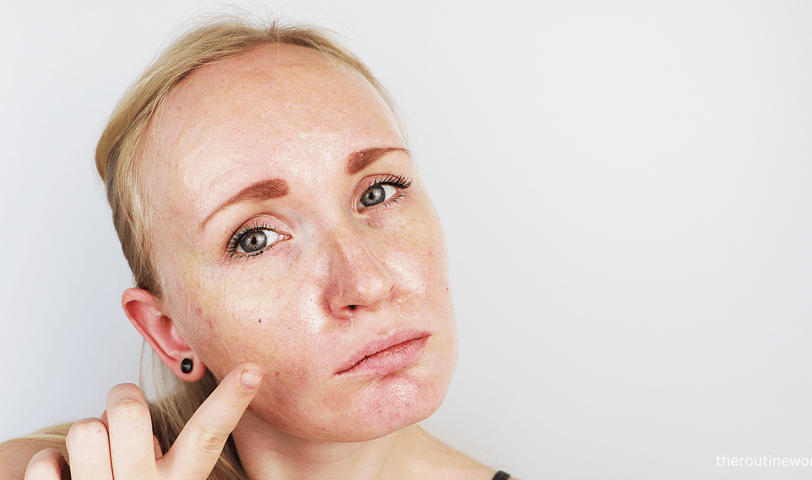Effective Hyperpigmentation Solutions: Addressing Skin Concerns from Sun to Screen
Hyperpigmentation, characterized by darkened patches on the skin, is increasingly becoming a major concern in dermatology. While often considered a cosmetic issue, hyperpigmentation can significantly impact a person's confidence and self-esteem. This condition can arise from various factors, including sun exposure, hormonal changes, inflammation, and most recently, increased exposure to blue light from screens.
SKIN CONCERNS
Rahul Tiwari
8/30/20244 min read


As our lives become more intertwined with technology, understanding the causes and solutions for hyperpigmentation has never been more essential. In this blog post, we will explore the various aspects of hyperpigmentation, its triggers, and effective solutions to address this prevalent skin condition.
Understanding Hyperpigmentation
Hyperpigmentation occurs when melanin, the pigment responsible for skin color, is produced in excess, resulting in darkened areas on the skin. The patches can appear anywhere on the body, most commonly on the face, arms, and hands. Types of hyperpigmentation include:
Sunspots: Caused by prolonged exposure to UV rays.
Melasma: Often triggered by hormonal changes, particularly in women during pregnancy or those who take birth control pills.
Post-inflammatory hyperpigmentation: Resulting from skin trauma, such as acne or eczema.
These variations can affect individuals of all skin tones; however, darker skin tones are generally more prone to post-inflammatory hyperpigmentation, which can develop more prominently.
Current Major Concerns for Skin Tone
With the ever-increasing time spent on digital devices, particularly in our remote working culture, a new concern has emerged: the effect of blue light exposure on skin health. Blue light, emitted by screens from computers, smartphones, and tablets, can penetrate the skin and contribute to hyperpigmentation. Research suggests that prolonged exposure can exacerbate existing hyperpigmented areas and lead to premature skin aging. This has made it crucial for individuals to adopt effective protective measures.
Blue Light and Its Impact on Skin
According to dermatological experts, blue light can induce oxidative stress in skin cells, promoting inflammation and accelerating the production of melanin. While the research surrounding blue light and skin health is still relatively new, what is evident is that addressing screen time and implementing protective routines is fundamental for anyone concerned about hyperpigmentation.
What to Do About Hyperpigmentation
Addressing hyperpigmentation requires a multifaceted approach that includes prevention, treatment, and daily care. Here are actionable steps you can take to manage hyperpigmentation effectively:
1. Sun Protection
The cornerstone of any skincare routine focused on hyperpigmentation is sun protection. UVA and UVB rays can worsen existing dark spots and accelerate new production. Key recommendations include:
Broad-spectrum sunscreen: Choose a sunscreen that protects against both UVA and UVB rays with an SPF of at least 30.
Reapplication: Apply sunscreen every two hours, especially if swimming or sweating.
Protective clothing: Wear hats and long-sleeved shirts to shield skin from direct sunlight.
2. Incorporate Antioxidants
Antioxidants are crucial in combating oxidative stress and reducing pigmentation. Look for products containing:
Vitamin C: A potent antioxidant that inhibits melanin production and brightens the complexion.
Niacinamide: Known for its anti-inflammatory properties, it can help reduce the appearance of dark spots.
Green Tea Extract: Offers protective benefits against sun damage and promotes skin health.
3. Chemical Exfoliation
Regular exfoliation aids in removing dead skin cells and promoting cellular turnover. This can improve the appearance of hyperpigmented areas. Consider using:
Alpha Hydroxy Acids (AHAs): Such as glycolic acid, which helps to exfoliate the skin and improve texture.
Beta Hydroxy Acids (BHAs): Such as salicylic acid, which penetrates the pores and works well for treating acne-related pigmentation.
4. Topical Treatments
There are numerous over the counter and prescription formulations aimed at treating hyperpigmentation. Popular options include:
Hydroquinone: A skin-lightening agent often prescribed for persistent dark spots.
Retinoids: Derived from Vitamin A, they facilitate skin cell turnover and can significantly lighten hyperpigmented areas over time.
Azelaic acid: An effective treatment for post-inflammatory hyperpigmentation and melasma.
5. Professional Treatments
For more severe cases of hyperpigmentation or those resistant to home treatments, professional solutions may be warranted. These include:
Chemical Peels: Utilizing stronger acids to remove layers of skin and reduce pigmentation.
Laser Therapy: Targets pigmented areas with precision, effectively diminishing the appearance of dark spots.
Microneedling: Promotes collagen production and can improve skin texture and pigmentation issues.
Learn about Microneedling and Intradermal filters.
Other Remedies
In addition to the aforementioned treatments, several natural remedies can help support skin health and reduce hyperpigmentation:
Licorice Extract: Known for its anti-inflammatory properties, it can lighten skin and improve overall complexion.
Kojic Acid: Derived from fungi, this ingredient helps to inhibit melanin production and can be beneficial for hyperpigmentation.
Papaya Enzymes: Contains natural exfoliating properties that can help brighten the skin.
It's important to perform patch testing when trying new topical treatments to avoid adverse reactions and consult a dermatologist for personalized recommendations.
Summary
Hyperpigmentation can be a frustrating and challenging condition, particularly with the additional concern of increased blue light exposure in our digital age. However, with the right approach—emphasizing sun protection, antioxidant use, and effective topical treatments—it is possible to manage and reduce discoloration. Integrating professional solutions can further enhance treatment efficacy. Ultimately, the journey towards clearer and more even-toned skin demands patience and commitment, but the rewards of increased confidence and skin health are well worth the effort.
In conclusion, understanding the complexities of hyperpigmentation and emerging factors like blue light exposure allows individuals to take informed steps towards healthier skin. Proactive treatment and daily skincare routines pave the way for a more radiant complexion, empowering people to embrace their skin confidently.
References
American Academy of Dermatology. (n.d.). Hyperpigmentation. Retrieved from AAD Hyperpigmentation
Cosmetic Dermatology. (2021). The Impact of Blue Light on Skin Aging. Retrieved from Cosmetic Dermatology
DermNet NZ. (2023). Hyperpigmentation: Causes and Treatment. Retrieved from DermNet NZ
Journal of Clinical and Aesthetic Dermatology. (2022). Management of Hyperpigmentation. Retrieved from JCAD
Skin Cancer Foundation. (n.d.). How to Protect Your Skin from Blue Light. Retrieved from Skin Cancer Foundation


